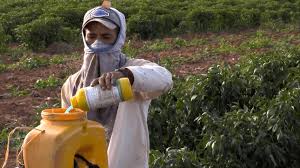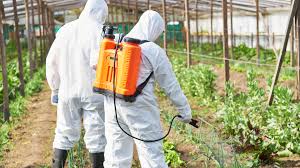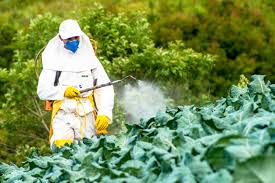All pesticides are poisonous. Extra care must be taken to prevent poisoning of the applicator and to avoid environmental damage. Harm to both humans and the environment may occur if excessive pesticide is added to water or if faulty application equipment is used.
Several precautionary steps should be observed when planning to apply pesticides and also during their usage.
Understanding Pesticide Hazard Classifications in Agricultural Practice
Before applying any pesticide, it is important to check the hazard classification, which is always written on the label. The classification helps determine the level of caution required in handling. For example:
Class I pesticides: extremely/highly hazardous – DO NOT USE
Class II pesticides: moderately hazardoustake great care
Class III pesticides: slightly hazardoustake care
Class IV/Unclassified pesticides: unlikely to be hazardous – still take care
This classification provides guidance on how cautiously the pesticide should be handled.
Read Also: How to determine if the Oxygen Level of the water in your Fish Pond is enough
Recommended Procedure for Safe Handling of Pesticides in the Field

1. Read and understand the product label: The label provides key information about the product’s use and associated risks, including the correct safety and emergency procedures.
2. Practice good personal hygiene: Always have clean water available during chemical use. Eating, smoking, or drinking should be strictly avoided while handling or applying crop protection chemicals. It is important not to work alone; always work with a companion in the field.
If an individual shows signs of pesticide poisoning, medical help should be sought immediately. Symptoms include:
vomiting, convulsions, loss of reflexes, unconsciousness, difficulty breathing, fever, muscle twitching, excessive thirst, constriction of eye pupils, and rapid breathing.
First aid should be administered immediately, and the patient should be taken to the nearest medical facility along with the pesticide container and its label.
Read Also: Economic Importance, Uses, and By-Products of Watermelon Axils
Approach to First Aid for Pesticide Poisoning in Agricultural Activities

If any of the symptoms of pesticide poisoning occur, the following actions should be taken promptly as first aid:
1. Identify the entry point of the poison: Determine if the pesticide entered the body through the mouth, nose, skin, or eyes.
2. Inhalation: Move the person to an area with fresh air immediately.
3. Eye exposure: Wash the eyes for 15 minutes using clean, gently running water. If running water is unavailable, use water from a container and change it frequently.
4. Skin exposure: Remove contaminated clothing and wash the affected skin area thoroughly with soap and water.
5. Breathing difficulty: If the patient is not breathing, attempt artificial respiration if trained to do so.
6. Swallowed pesticide: If the person is conscious, rinse the mouth with plenty of clean water. Then, read the pesticide label for further instructions.
7. General support: Keep the patient warm and comfortable throughout the process.
Always follow the specific first aid directions on the pesticide container. When uncertain, consult a medical professional without delay.
Final Safety Guidelines for Pesticide Use in Agriculture
Pesticides should only be used when absolutely necessary and must be applied according to the label instructions.
Avoid underdosing or overdosing, and always use a functional and properly maintained sprayer. No matter how physically strong one is, spraying should never be done alone to ensure help is available in case of emergency.
It is essential to remain safety conscious, and in any suspected case of pesticide poisoning, administer first aid immediately and seek further medical attention.
Do you have any questions, suggestions, or contributions? If so, please feel free to use the comment box below to share your thoughts. We also encourage you to kindly share this information with others who might benefit from it. Since we can’t reach everyone at once, we truly appreciate your help in spreading the word. Thank you so much for your support and for sharing!

